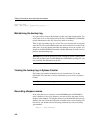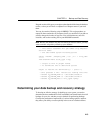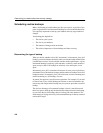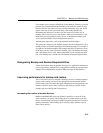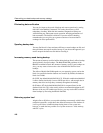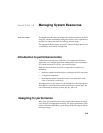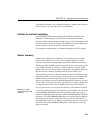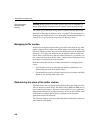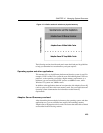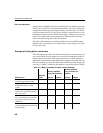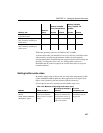
Overview of memory use
420
Other considerations, such as hardware and network analysis, can locate
bottlenecks in your installation.
Overview of memory use
Adaptive Server IQ uses memory for several purposes:
• Buffers for data read from disk to resolve queries
• Buffers for data read from disk when loading from flat files
• Overhead for managing connections, transactions, buffers, and database
objects
The sections that follow explain how the operating system supports IQ's use of
memory, how IQ allocates memory for various purposes, how you can adjust
the memory allocations for better performance, and what you may need to do
to configure the operating system so that enough memory is available for IQ.
Paging increases available memory
When there is not enough memory on your system, performance can degrade
severely. If this is the case, you need to find a way to make more memory
available. Like any RDBMS software, Adaptive Server IQ requires a lot of
memory. The more memory you can allocate to Adaptive Server IQ, the better.
However, there is always a fixed limit to the amount of memory in a system,
so sometimes operating systems can have only part of the data in memory and
the rest on disk. When the operating system must go out to disk and retrieve
any data before a memory request can be satisfied, it is called paging or
swapping. The primary objective of good memory management is to avoid or
minimize paging or swapping.
The most frequently used operating system files are swap files. When memory
is exhausted, the operating system swaps pages of memory to disk to make
room for new data. When the pages that were swapped are called again, other
pages are swapped, and the required memory pages are brought back. This is
very time-consuming for users with high disk usage rates. In general, try to
organize memory to avoid swapping and, thus, to minimize use of operating
system files.



